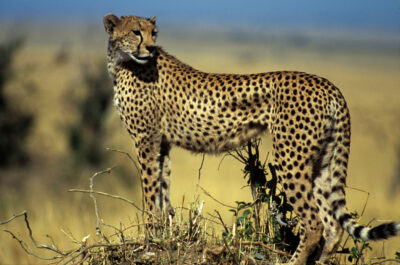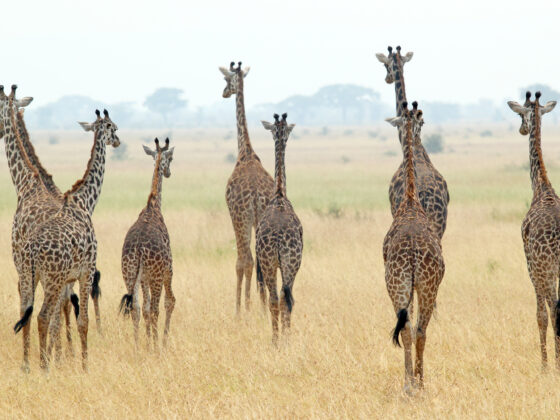The cheetah, renowned for being the fastest land animal, has long captured the imagination of wildlife enthusiasts across the globe. While its sleek figure and incredible speed are iconic, the cheetah’s survival has been under threat for decades due to habitat loss, poaching, and human encroachment. Today, cheetahs remain on the edge of extinction in many parts of their native range. In a bold move to reverse this trend, efforts are underway to reintroduce cheetahs from Africa to India, marking a significant chapter in the global conservation of this majestic species.
The Journey of the Cheetah: From Africa to India
Historically, India was home to the Asiatic cheetah, which roamed its plains and forests for centuries. However, by the mid-20th century, the species was declared extinct in India due to hunting and habitat destruction. In recent years, conservationists and the Indian government have spearheaded an ambitious plan to bring cheetahs back to Indian soil, not only to restore ecological balance but also to help secure the survival of this vulnerable species.
In 2022, India launched its first project to reintroduce African cheetahs into select regions, starting with Madhya Pradesh’s Kuno National Park. These cheetahs are carefully selected from Africa, specifically Namibia and South Africa, where populations remain relatively stable, and are transferred to specially designed habitats in India. This transcontinental reintroduction marks a pioneering effort to conserve the species and regenerate a once-lost part of India’s biodiversity.
The Significance of Reintroduction: Why It Matters
Reintroducing cheetahs to India is about more than just re-establishing a lost species. Cheetahs play a crucial role in the ecosystem as apex predators, helping to maintain a healthy balance between herbivores and vegetation. The presence of cheetahs in India can enhance biodiversity and support the ecological integrity of grasslands and savannahs, where they once thrived. The project also represents a symbolic shift in India’s commitment to wildlife conservation, building on the country’s success with Project Tiger, which helped bring back tiger populations from the brink of extinction.
As cheetahs are reintroduced into the wild, there are growing opportunities for eco-tourism, which can aid in the long-term sustainability of the project.
A great way to experience these conservation efforts firsthand is by embarking on an India bike tour, where you can combine cycling with safari adventures, spotting not only cheetahs but also other iconic big cats such as tigers and leopards.
Exploring Big Cats in India on a Bike Tour
India offers a unique blend of landscapes, wildlife, and culture that is best explored slowly, allowing travelers to connect with the country’s natural beauty. One of the most exciting ways to see big cats in the wild is by combining cycling with wildlife safaris. These bike tours take you through India’s lush forests, rolling hills, and national parks, offering a chance to observe big cats in their natural habitat. Here are three incredible regions in India where you can embark on a bike tour with safaris to spot these majestic creatures.
1. Rajasthan: The Desert Kingdom and Home of the Leopard
Why Rajasthan is Great for Cycling and Safari: Rajasthan’s rugged landscapes, arid deserts, and majestic palaces offer a stark contrast to its dense wildlife reserves. This land of royalty is home to the elusive leopard, and cycling through its rural roads lets you explore its rich cultural heritage while also diving into thrilling wildlife experiences. A Rajasthan bike tour offers a peek into vast wildlife that exists across the North-west part of India.
Best Places to Spot Big Cats:
- Ranthambore National Park: One of India’s most famous wildlife reserves, Ranthambore is known for its significant population of Bengal tigers. Embark on a safari to see these majestic predators in their natural habitat, against the backdrop of ancient ruins and fortresses.
- Jawai Leopard Hills: Nestled among granite boulders and hills, Jawai is a hidden gem for leopard sightings. A cycling tour through this region allows you to experience rural Rajasthan before heading out on a jeep safari to spot these elusive big cats.
Cycling Highlights:
- Jodhpur to Udaipur: Cycle through stunning landscapes, small villages, and historic forts, ending your tour with wildlife safaris at Ranthambore or Jawai.
- Best Time to Visit: The best time to visit Rajasthan for cycling and big cat safaris is from October to March, when the weather is cool and dry.
Best Hotels:
- Aman-i-Khas, Ranthambore: A luxury tented camp offering an immersive wildlife experience with guided safaris and top-tier comfort.
- Sujan Jawai: A boutique luxury camp in the heart of leopard country, providing both thrilling safaris and a serene retreat.
2. Kerala: Cycling Through the Spice Plantations and Tiger Reserves
Why Kerala is Great for Cycling and Safari: Known for its backwaters, lush hills, and rich biodiversity, Kerala offers cyclists an ideal blend of natural beauty and wildlife encounters. The forests and Western Ghats in this region are home to the tiger and elephant, making it an excellent destination for a cycling tour that includes wildlife safaris. A great way to see such a variety of fauna is a Kerala bike tour.
Best Places to Spot Big Cats:
- Periyar Wildlife Sanctuary: Nestled in the Western Ghats, Periyar is known for its healthy population of tigers, along with elephants and a wide variety of bird species. A safari here provides a glimpse of big cats roaming the dense forests.
- Silent Valley National Park: This lesser-known park in the Nilgiri Hills offers a pristine landscape where leopards and tigers can be spotted.
Cycling Highlights:
- Munnar to Thekkady: Cycle through tea and spice plantations, passing waterfalls and mountain ranges, and end your tour with a safari in Periyar to spot big cats.
- Best Time to Visit: The ideal time for cycling and safaris in Kerala is between October and February, when the weather is cool, and the forests are vibrant with wildlife activity.
Best Hotels:
- Spice Village, Thekkady: A luxury eco-resort near Periyar that offers both wildlife safaris and a serene retreat in the lap of nature.
- Windermere Estate, Munnar: Set amidst the misty hills of Munnar, this luxury estate is perfect for cyclists looking to explore Kerala’s scenic routes and nearby wildlife reserves.
3. North East India: Untamed Wilderness and Big Cat Encounters
Why North East India is Great for Cycling and Safari: The North East is one of India’s most remote and unexplored regions, offering raw natural beauty, rich tribal culture, and diverse wildlife. The region’s dense forests and rolling hills are home to rare wildlife, including tigers, leopards, and clouded leopards. Cycling through this area offers a true adventure, with a chance to immerse yourself in its wilderness and spot big cats on safaris.
Best Places to Spot Big Cats:
- Kaziranga National Park (Assam): Famous for its population of one-horned rhinoceroses, Kaziranga is also home to tigers and leopards. A safari here offers an unparalleled opportunity to see these big cats alongside other unique species.
- Manas National Park (Assam): A UNESCO World Heritage site, Manas is known for its tiger population, as well as other endangered species like the clouded leopard and Assam roofed turtle.
Cycling Highlights:
- Shillong to Kaziranga: Cycle through the rolling hills of Meghalaya, passing through picturesque villages, waterfalls, and forests before heading to Kaziranga for a safari to spot tigers and rhinos.
- Best Time to Visit: The best time for cycling and safaris in the North East is between November and April, when the weather is cool and the wildlife activity is at its peak.
Best Hotels:
- Diphlu River Lodge, Kaziranga: A luxurious lodge offering guided safaris in Kaziranga, with an emphasis on eco-tourism and wildlife conservation.
- Ri Kynjai, Shillong: A serene luxury retreat in the hills of Meghalaya, perfect for resting after a long day of cycling.
Conclusion: Cycling and Safari – A Unique Indian Adventure
India’s rich and varied landscapes make it a dream destination for cyclists, and the chance to spot big cats in the wild adds an unforgettable dimension to the experience. Whether it’s the desert expanses of Rajasthan, the tropical forests of Kerala, or the untamed wilderness of the North East, India’s national parks and wildlife reserves offer thrilling opportunities to see cheetahs, tigers, and leopards in their natural habitat. A luxury bike tour across these regions combines adventure, nature, and wildlife, creating a unique journey through one of the world’s most fascinating countries.


